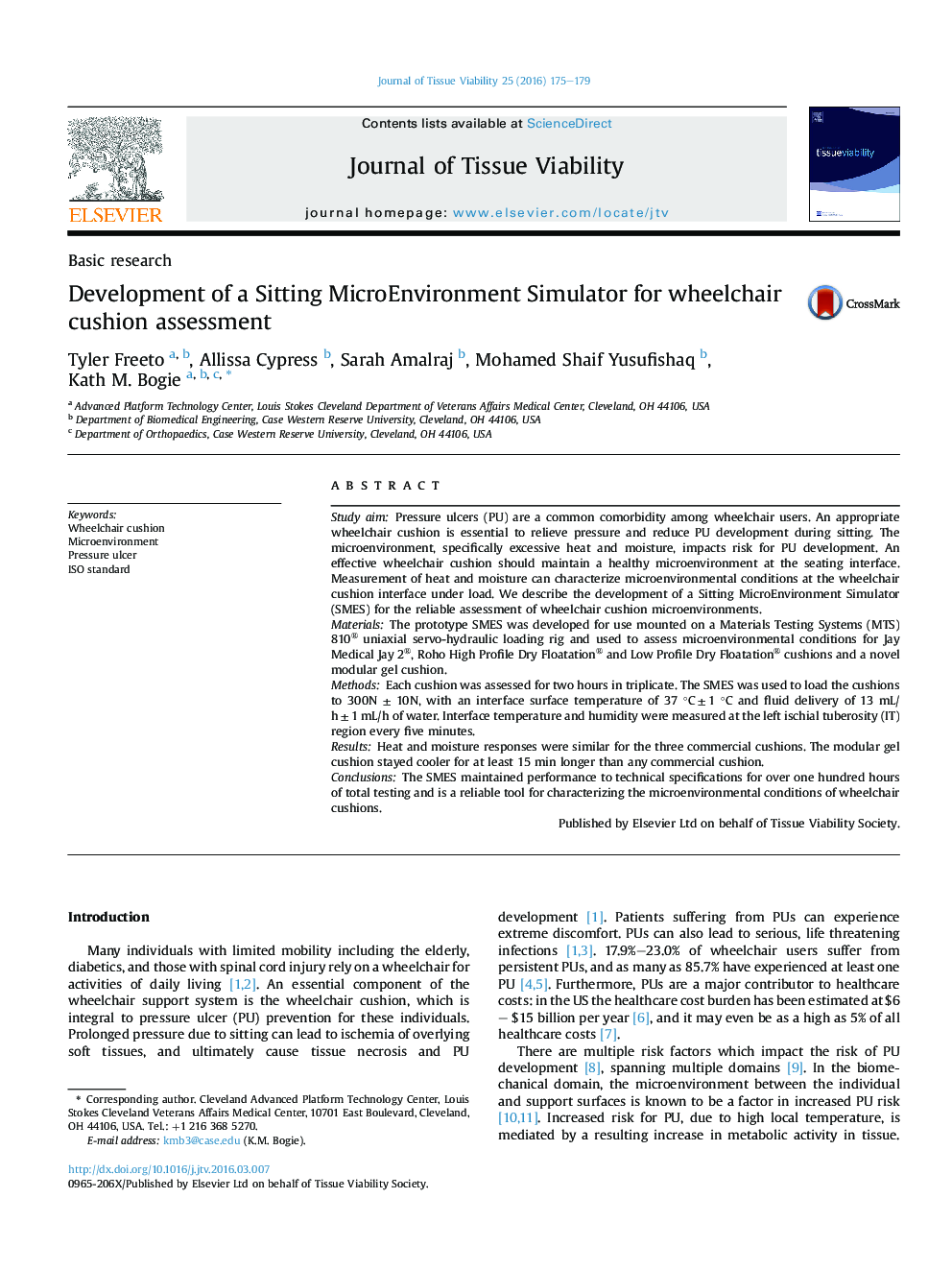| کد مقاله | کد نشریه | سال انتشار | مقاله انگلیسی | نسخه تمام متن |
|---|---|---|---|---|
| 2673791 | 1403770 | 2016 | 5 صفحه PDF | دانلود رایگان |
• The Sitting MicroEnvironment Stimulator (SMES) enables cushion microenvironmental testing.
• The SMES performed reliably and repeatably for over 100 h to deliver controlled load, heat, and moisture to the wheelchair cushion interface.
• Commercial cushions had similar microenvironmental properties under ISO 16840-2 testing.
• The SMES can be constructed at low cost to meet ISO 16840-2 functional technical specifications.
Study aimPressure ulcers (PU) are a common comorbidity among wheelchair users. An appropriate wheelchair cushion is essential to relieve pressure and reduce PU development during sitting. The microenvironment, specifically excessive heat and moisture, impacts risk for PU development. An effective wheelchair cushion should maintain a healthy microenvironment at the seating interface. Measurement of heat and moisture can characterize microenvironmental conditions at the wheelchair cushion interface under load. We describe the development of a Sitting MicroEnvironment Simulator (SMES) for the reliable assessment of wheelchair cushion microenvironments.MaterialsThe prototype SMES was developed for use mounted on a Materials Testing Systems (MTS) 810® uniaxial servo-hydraulic loading rig and used to assess microenvironmental conditions for Jay Medical Jay 2®, Roho High Profile Dry Floatation® and Low Profile Dry Floatation® cushions and a novel modular gel cushion.MethodsEach cushion was assessed for two hours in triplicate. The SMES was used to load the cushions to 300N ± 10N, with an interface surface temperature of 37 °C ± 1 °C and fluid delivery of 13 mL/h ± 1 mL/h of water. Interface temperature and humidity were measured at the left ischial tuberosity (IT) region every five minutes.ResultsHeat and moisture responses were similar for the three commercial cushions. The modular gel cushion stayed cooler for at least 15 min longer than any commercial cushion.ConclusionsThe SMES maintained performance to technical specifications for over one hundred hours of total testing and is a reliable tool for characterizing the microenvironmental conditions of wheelchair cushions.
The Sitting MicroEnvironment Stimulator and test cushion mounted in the MTS machine. The canvas cloth (blue) has been removed to enable viewing of the heating elements. The SMES maintained consistent, reliable function for more than 100 h of testing and can be flushed between uses, eliminating biofouling. There was little variation in microenvironmental responses for the cushions tested using the SMES.Figure optionsDownload high-quality image (126 K)Download as PowerPoint slide
Journal: Journal of Tissue Viability - Volume 25, Issue 3, August 2016, Pages 175–179
